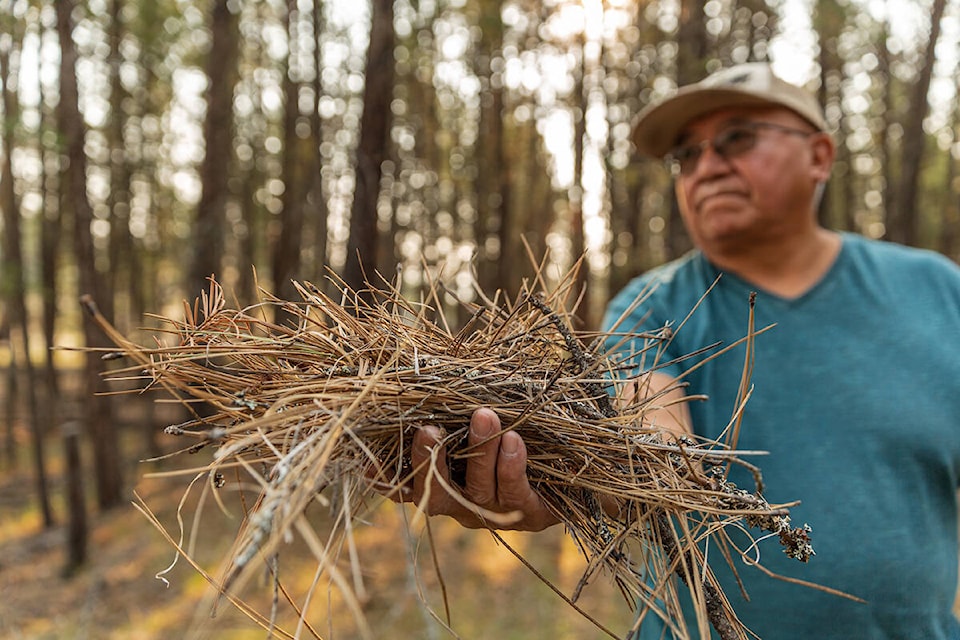The idea of maintaining an ecosystem with controlled burns is not a new one. In fact it has been used by the Ktunaxa for generations.
According to the Columbia Basin Trust, in 2019, the Trust began working in partnership with ʔaq̓am to implement a five-year project to restore approximately 1,300 hectares of mature forest, open forest and open grassland—using prescribed burns and selective harvesting techniques—to improve biodiversity, reduce wildfire risk and enhance the overall health of this part of its traditional territory.
The project is supported by the Trust’s Ecosystem Enhancement Program
By thinning dense Douglas fir, the project aims to improve habitat for elk, deer and several rare and endangered species, including the flammulated owl, Lewis’s woodpecker and little brown bat. Prescribed burning increases soil fertility and, in this ecosystem has the potential to aid the growth of rare plant species like scarlet gaura, prairie gold bean and hairstem ground smoke, which are native to the area.
ʔaq̓am is located in an area that often experienced low-intensity fires that consumed forest and grassland fuels and revitalized the ecosystem. The fires also thinned younger stands and increased the height of the forest canopy.
Reintroducing the practice of using fire in a controlled way to support ecosystem renewal and health connects back to forest and rangeland management practices that have been implemented in the region by communities like ʔaq̓am for generations. Historically, ʔaq̓amnik held vast horse and cattle herds and maintained and stewarded large expanses of range. Cultural burning practices in the past were also used to influence the movement of elk herds in ʔaq̓am.
Grasslands were very important to the Ktunaxa way of life, and many in this region have been damaged, or lost entirely, in the last century,” says ʔaq̓am’s Nasuʔkin Joe Pierre Jr. “This work is an important step for ʔaq̓am in protecting the remaining grasslands we have left here.”
The current project reintroduces this practice. It also connects with and complements other wildlife corridors in the area and aligns with the ways other groups have been working to improve the ecology of the Rocky Mountain Trench.
Additionally, as part of this project—building on findings from ʔaq̓am’s Heritage Management Plan, also supported in part by the Trust—several locations within the project boundary found potential for significant pre-contact archaeological features and deposits, and have been designated as no-work zones.
With completion of this project set for 2023, ʔaq̓am plans to continue the use of cultural burning to help manage its reserve lands in perpetuity. “We are returning this land to a state where the practice of burning can be revived by ʔaq̓amnik, safely, to keep our lands healthy and protect our homes from wildfires,” said Nasuʔkin Joe Pierre Jr.
READ: Whitebark Pine Ecosystem Foundation gets $600K grant from CBT
READ: CBT’s new $1.5 million grant program supports climate resilience initiatives
carolyn.grant@kimberleybulletin.com
Like us on Facebook and follow us on Twitter
